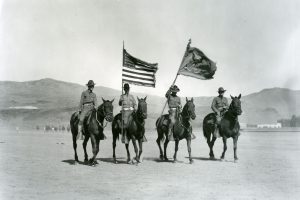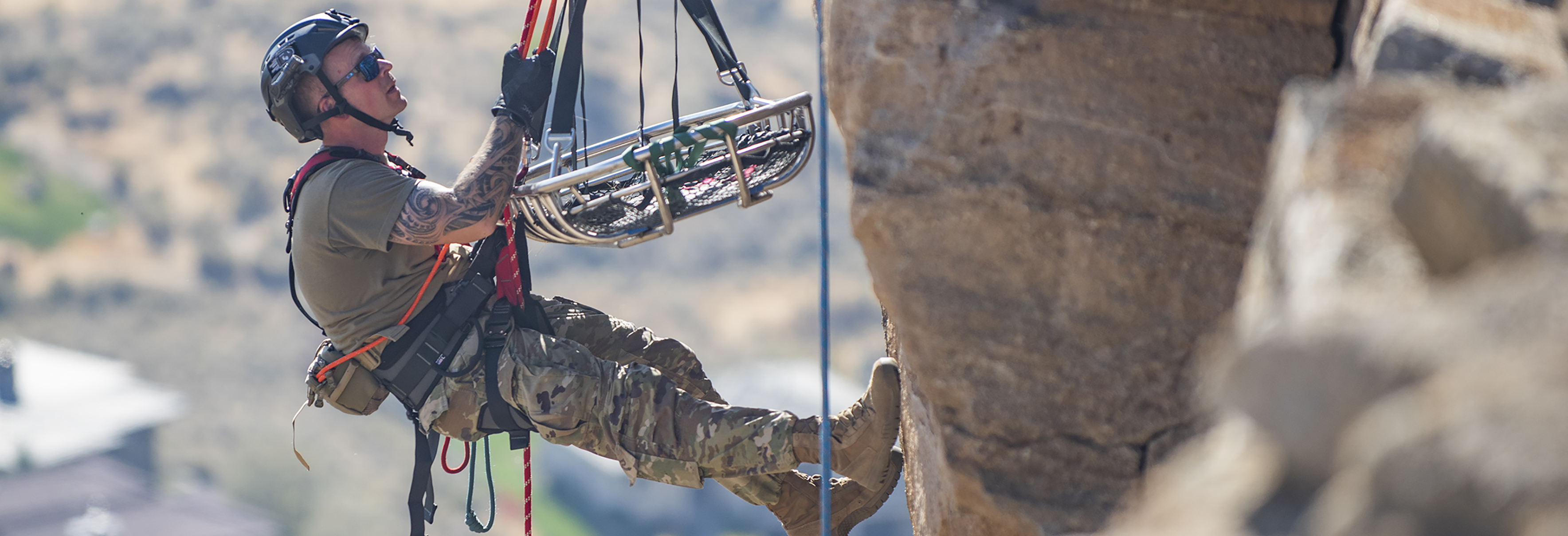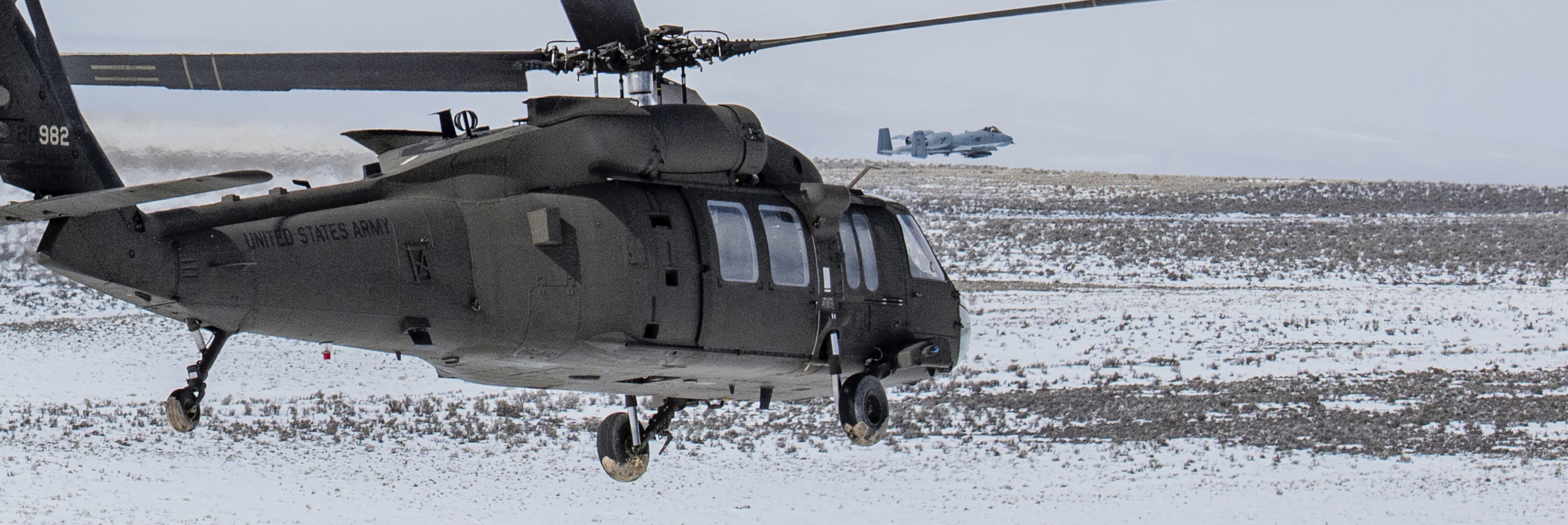
The Idaho National Guard was established on March 14th, 1891, when the state legislature approved the organization to serve as the state’s militia. Since that time, the Idaho National Guard has served in every major U.S. conflict.
Today, more than 3,000 Soldiers and 1,300 Airmen make up the Idaho National Guard that includes the Idaho Army National Guard and the Idaho Air National Guard with a presence in nearly two dozen communities throughout the state.
A Brief History of the Idaho National Guard
While Idaho was still a territory in the 1860s, volunteers formed militia companies to respond to disputes between the state’s earliest settlers and its native population. A more formal territorial militia, created by the territory governor, existed from 1877-79. These units were dissolved when they were no longer needed.
When Idaho became a state in 1890, the state’s constitution required Idaho to establish a permanent state militia. The First Regiment of Idaho Infantry was organized in 1890 and the legislature approved the formation of the Idaho National Guard on March 14, 1891, to serve as the state’s militia.
The Idaho Army National Guard first deployed on May 7, 1898 when the First Infantry Regiment of the United States was activated and sent to the Philippines to fight in the Spanish-American War. The Idaho Guard was activated again in 1916 in response to increasing border disputes with the Mexican government and sent to Nogales, Arizona, for more than five months. The Idaho National Guard also served in World War I and World War II.
During World War II, every unit in the state was activated and Idaho Soldiers fought in both the Pacific and European theaters. The 116th Engineer Battalion was the only National Guard unit in the country to participate in the Korea and Vietnam conflicts. The 148th Field Artillery Battalion and the 25th Army Band were also activated during the Korean conflict.
Only one unit, the 148th Public Affairs Detachment, participated in Operation Desert Shield/Desert Storm. The detachment served with the 3rd Armored Division.
Since September 11, 2001, Idaho National Guard units have deployed several times around the world in support of the Global War on Terrorism.
The Idaho Air National Guard was formally established on September 18, 1947, concurrent with the establishment of the United States Air Force as a separate branch of the United States military.
The Idaho Air National Guard deployed three times during the 1990s to the Middle East to enforce the no-fly zone over Iraq. The unit has also deployed several times to Iraq and Afghanistan in support of the Global War on Terror, most recently in 2016.
Today, more than 4,000 Citizen-Soldiers and Airmen serve in the Idaho National Guard in more than 20 communities throughout the state.
The History of Gowen Field
In December of 1940, Adjutant General Adams of the U.S. Army informed Boise Mayor James Straight that construction of the Boise Air Base had been authorized. Boise was chosen for an Air Force training center because of it’s climate and physical conditions. The base was to consist of approximately 120 buildings, providing facilities for housing, messing, administration, recreation and warehousing of a troop garrison of 2,500 personnel at an authorized cost of $2,115,130.00.
On Jan. 21, 1941, equipment was moved to the desolate sagebrush-covered site and the task of clearing the ground for construction was started. In March of that year, the first spade of dusty soil was turned by Governor Chase Clark.
The first Commanding Officer of the new base was Col. Robin A. Day who took command on March 12, 1941. On Easter Sunday, April 15, 1941, the first original cadre of 20 Soldiers arrived from Salt Lake City to form the 39th Air Base group.
The change of name was made under General Order No. 8, on July 29, 1941 and Boise Air Base officially became Gowen Field. This was in honor of Paul Gowen, a West Point graduate and pilot from Caldwell, Idaho, who was killed in a plane crash in 1938. The choice of name was popular with the local citizens and further solidified the good relations between the military and community.
Gowen Field remained as an active Army Air Corps Base during WWII, serving as a medium bomber training base. Gowen Field was first home to six B-18 Bolo bombers. However, these aircraft were soon replaced by the faster B-26 Marauders.
The bombing of Pearl Harbor sent Gowen Field into high alert. As with the rest of the nation, activities ramped up. In a short period of time, Gowen Field saw other types of aircraft circulate through its facilities and runways. In January of 1942 Gowen Field received the latest and greatest B-17 Flying Fortress. Soon after, Gowen Field became a combat crew training school for the B-24 Liberator. This would continue throughout the duration of the war.
Soon after the end of the war, the Army locked its gates and returned Gowen Field back over to Boise by the early part of 1946. The gates did not remain locked for long, however.
Idaho Adjutant General, Gen. Harry Abendroth, requested that Lt. Col. Thomas G. Lanphier establish an Idaho Air National Guard that would lease the land from the city.
Since then, Gowen has celebrated more than a half-century of volunteer service to Idaho and the nation with thousands of Citizen-Soldiers and Airmen sharing the runways and land with Boise and the community ever since.
Today Idaho Army National Guard units, the Idaho Air National Guard, the Army, Marines and Navy Reserves call Gowen Field home.
 Official Government Website
Official Government Website




